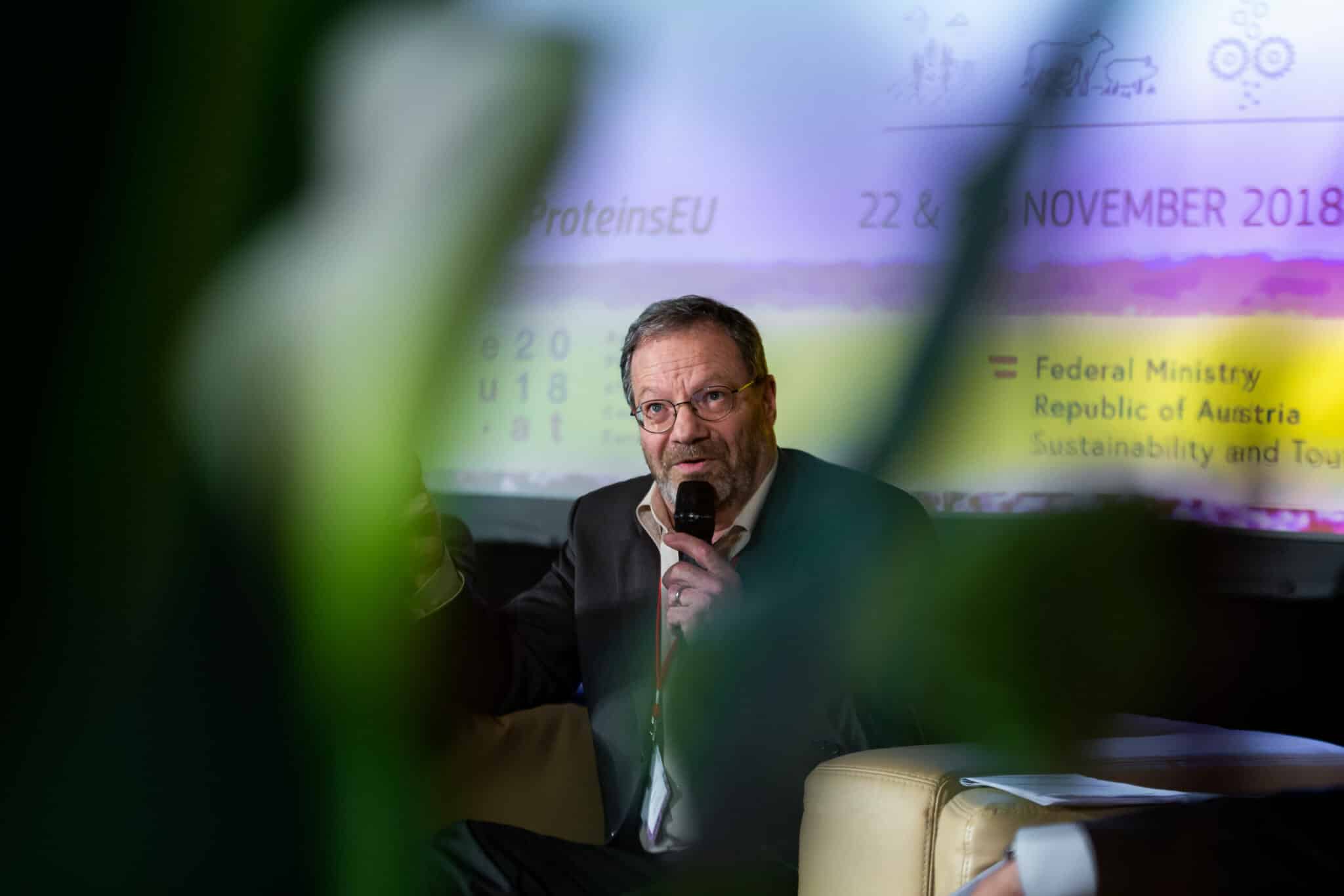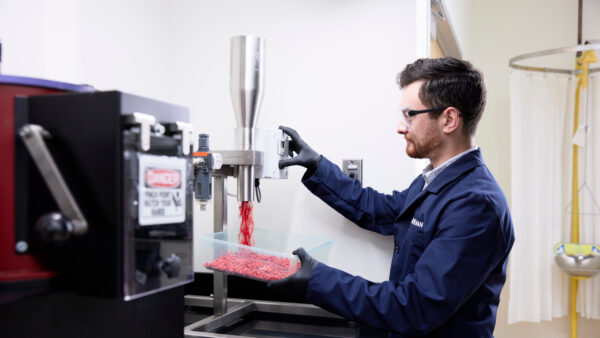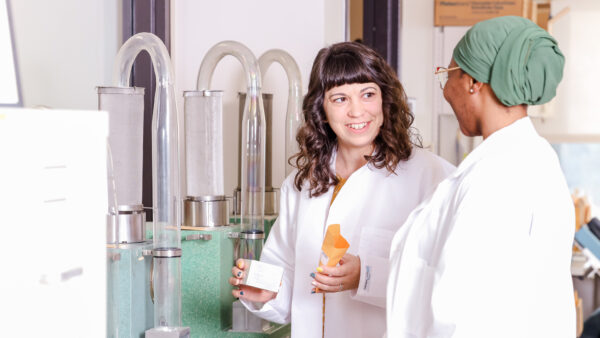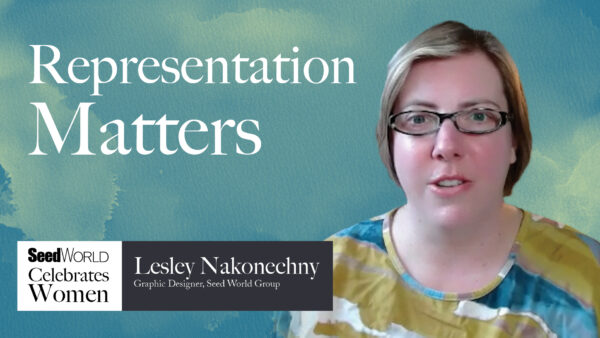Improving the effectiveness of Europe’s Research and Innovation projects.
Seen as a means to drive economic growth and create jobs, Horizon 2020 has the political backing of Europe’s leaders and the members of the European Parliament. They agreed that research is an investment in Europe’s future and so they put it at the heart of the European Union’s (EU) blueprint for smart, sustainable and inclusive growth and jobs. The goal is to ensure Europe produces world-class science, removes barriers to innovation and makes it easier for the public and private sectors to work together. The EU Framework Programme for Research and Innovation will be complemented by further measures to complete and further develop the European Research Area. These measures will aim at breaking down barriers to create a genuine single market for knowledge, research and innovation. Without innovation we’d be sitting around woodfires in front of a cave worried about the next storm. In order to get a better look at the EU’s policy for R&I projects, our sister publication, European Seed, sat down with Marc Cornelissen, who recently moved to BASF and chairs the European Technology Platform “Plants for the Future”.
European Seed (ES): Marc, the European Union has been and continues to invest in Research and Innovation (R&I) projects. Are they doing a good job?
Marc Cornelissen (MC): The goal of the R&I investments is to sustain and build out welfare in Europe. It is about living standards, public health, resource sustainability, business development and attractiveness, etc. It is against those dimensions that the appropriateness of the EU R&I spending need to be assessed. This requires a kind of European multi-year masterplan against which one benchmarks.
The good news is that the EU does regularly develop and publish strategy papers in multiple fields. It also periodically benchmarks its R&I investment efforts against those of other world regions. The 2017 Lab-Fab-App report states that Europe is amongst the best in class with respect to scientific output and struggles to translate this effectively into innovation. In Europe we furthermore appear to be relatively better in “optimizations” than in “step changes”. This has a lot to do with European industry structure, maturity and switching costs. To progress, one has to dive deep into how value chains and associated ecosystems are build up, operate, share value, innovate and handle risk.
So, in short: In Europe, several core elements are practiced, such as vision development, strategy implementation, set up of diverse financial buckets, progress tracking and benchmarking. Yet the productivity of the R&I could improve through making use of a deeper understanding of the value chain inter- and intra-play.
ES: In the coming decades we will be facing even more challenges than before, such as climate change, for example. Is the EU spending its money in the right places?
MC: Challenges with a global reach are best addressed through a global approach. Across the world one finds legacy innovation centers with complementary expertise. This should be leveraged. R&I is most effective if it builds on a solid starting basis of expertise, know-how, networks and infrastructure. Consistency of direction for multiple years offers an expert center the greatest chance of delivering. So, ideally it is agreed at global level who best contributes to what. This would allow the EU to target existing resources meaningfully. At the same time this would offer job continuity. This then ultimately translates into a balanced ecosystem involving academia, start-ups, R&D companies and multinationals, and students seeing employment options.
To repeat your question: Does the EU spend the money today in the right places? It certainly looks for this global approach, it certainly has identified the European strengths. What from my perspective is missing is, again, this masterplan, and assumptions and approximations of what should be achieved by when, broad brush of course. This would enable an early reality check, and probably the development of realistic perspectives of what can be delivered by when, and who should do what to get there. Moreover, it would make communication more concrete and understandable, and improve the trust between academia, industry and society.
ES: Where do you see that improvements could take place in the overall EU process of funding R&I projects?
MC: This process has been fine-tuned over multiple years. It involves good people, aims at balanced and objective assessments, and largely serves the purpose. My question is more whether the right subject matter goes through that process. I am concerned about the inefficiency of non-orchestrated and parallel efforts. Fortunately, there is creativity on this aspect at the side of the EU. Take for instance the current mission R&I concept that aims at launching multi-year, multi-disciplinary, critical scale efforts targeting goals that resonate with society. Instruments of this type should be tested for their effectiveness, the ability to steer while going, and their impact on the innovation ecosystem. In addition, the process to assemble the different innovation proposals that should make up such critical scale mission R&I effort would need careful design. Failing at this level, will have major consequences for the overall success rate. In industry one tends to work backwards from a given goal to define what needs to be accomplished. Based on this, tasks, handover points, and timing are defined. How do you do this best in a mission R&I setting in the proposal phase?
ES: Looking at the most recent R&I projects in the ag sector, some say there is a bias in granting the projects, towards more unconventional topics or viewpoints. Is this OK, or should this change?
MC: Historically, R&I would indeed primarily deal with basic research and closely associated applied research for the upstream part of the ag value chain. Nowadays, one sees an increasing number of R&I funding options for the middle and downstream part of the value chain. I find this an excellent development. The latter players are often part of a mature industry where margins are low, cost innovation is king, and where it is close to impossible to upgrade processes, products or product portfolios without external help. Importantly, the time it takes for society to receive the benefits from such R&I help, is much shorter. Ideally, funding schemes are targeted such that across the Ag value chain R&I starting points are properly balanced and in line with the key hurdles across the value chain.
ES: Are there sectors in the EU ag and seed sector that deserve more attention and more projects?
MC: There is an agile dimension to this question. There are a number of trends, such as regional independence, healthy food, sustainable agriculture, short block chains, mitigation of climate change, digitalisation, electrification, robotization, artificial intelligence, etc. that in the coming decades will dramatically change the way how the ag value chain operates, what products are made, how they are made and where, what value is created and what business models apply.
One should conduct scenario analyses to appreciate what the best choices for targeting R&I efforts would be. This sounds as no answer, but the challenge is to reduce the complexity ahead to a simplicity level that allows politicians to act with wisdom. I see too few efforts in the ag sector aimed at translating trends into plausible outcomes and use this to deduce meaningful actions. I expect that the drive towards healthy food and sustainable agriculture may offer here in the near future the first good examples.
ES: Is the private seed sector sufficiently involved in all the relevant projects?
MC: The short answer is “no”. I observe that the funding instruments and projects are known by only a relatively small group. It appears as if there are two circuits, one that actively makes use of the opportunities, and one that is hardly aware what is available and where to start. I think ESA is doing a fine effort by developing comprehensive views of projects of relevance to the seed players and share it with its members. I can imagine that still for many SMEs the step to put time and energy in even following at the information sharing level is already a distraction to the ongoing business.
I guess if one would like to get a broader involvement, one should look into initiatives with immediate benefits for the SMEs and with high practicality. Imagine Europe would take a lead in establishing a practical interface between academic research and, for example, breeders. The research could focus on identifying and unravelling critical biological processes underlying e.g. crop energy management, agronomic performance and functionality, and map out how changes in genetics and environment influence crop and crop product performance. To do the latter well, significant investments in AI and machine learning to model and predict crop performance and its products would be necessary. The deliverable of such interface would be hints for pre-breeding and breeding starting points. The predictive power of such hints would then improve over time through add-on of new research evidence, as well as through feedback loops from the user group, i.e. the value chain itself: breeders, farmers, processor, producers and consumers.
The power of such proposition is that it leverages a growing level of transferable know-how that is of value for all European crops. It is also highly practical as it offers European breeders evidence-based pre-breeding and breeding starting points. To make something like this a success, it would be key keep it practical, with low use barriers, and in line with the tools and goals of the SMEs.
ES: It seems to me that coordination among projects, before and after granting is crucial. Is this happening enough?
MC: To get somewhere with multiple people requires organisation and governance. When JFK made his mission statement “we choose to go to the moon”, it was achieved through a close to military set up. The ingredients were a masterplan, parallel tracks, back-ups, well-defined handover points and intermediate milestones, time and cost tables, and a strong governance to manage planning, execution, tracking and direction setting.
If one needs to combat climate change timely, or tackle any of the other challenges, can you leave out an empowered, competent and driven governance? Probably not. But how do you get something like this embedded in an agreeable and workable way in critical scale efforts such as the upcoming mission R&Is? Governance instruments, such as a supervisory board, steering committee, sounding board, etc. are commonly used, and you don’t hear too often that it made the difference. I think that this has to do with the absence of aligned, project-targeted KPIs of the participants, and the absence of something like a balanced scorecard where every group and person can find back what his/her contribution should be to complete the total picture. The power of working with smart team KPIs in the academic world is well exemplified by the Belgium VIB that in a twenty-year period succeeded in getting its academic output at the very international top just behind MIT.
Aligned project KPIs are likely to cause an attitude shift across the teams at the different locations. The “ownership” feeling is shifted from the local environment, the university or institute, to the project, because of which the same activities get framed differently, and better support project progression towards the end-goal. Such KPIs could be derived from a “project balanced scorecard”. Periodic review of such a balanced scorecard and the KPIs would reveal pain points in both task execution and governance beyond what one would observe in an activity Gantt chart (showing the amount of work done in certain periods of time in relation to the amount planned for those periods). The new challenge for the project team would be to use such insights to increase the project productivity.
Seed World (SW): Marc, the European Union has been and continues to invest in Research and Innovation (R&I) projects. Are they doing a good job?
Marc Cornelissen (MC): The goal of the R&I investments is to sustain and build out welfare in Europe. It is about living standards, public health, resource sustainability, business development and attractiveness, etc. It is against those dimensions that the appropriateness of the EU R&I spending need to be assessed. This requires a kind of European multi-year masterplan against which one benchmarks.
The good news is that the EU does regularly develop and publish strategy papers in multiple fields. It also periodically benchmarks its R&I investment efforts against those of other world regions. The 2017 Lab-Fab-App report states that Europe is amongst the best in class with respect to scientific output and struggles to translate this effectively into innovation. In Europe we furthermore appear to be relatively better in “optimizations” than in “step changes.” In my opinion this has a lot to do with European industry structure, maturity and switching costs. To progress, one has first to dive deep into how value chains and associated ecosystems are build up, operate, share value, innovate and handle risk.
So, in short: In Europe, several core elements are practiced, such as vision development, strategy implementation, set up of diverse financial buckets, progress tracking and benchmarking. Yet the productivity of the R&I could improve through making use of a deeper understanding of the value chain inter- and intra-play.
SW: In the coming decades we will be facing even more challenges than before, such as climate change, for example. Is the EU spending its money in the right places?
MC: Challenges with a global reach are best addressed through a global approach. Across the world one finds legacy innovation centres with complementary expertise. This should be leveraged. R&I is most effective if it builds on a solid starting basis of expertise, know-how, networks and infrastructure. Consistency of direction for multiple years offers an expert centre the greatest chance of delivering. So, ideally it is agreed at global level who best contributes to what. This would allow the EU to target existing resources meaningfully. At the same time this would offer job continuity. This then ultimately translates into a balanced ecosystem involving academia, start-ups, R&D companies and multinationals, and students seeing employment options.
To repeat your question: Does the EU spend the money today in the right places? It certainly looks for this global approach, it certainly has identified the European strengths. What from my perspective is missing is, again, this masterplan, and assumptions and approximations of what should be achieved by when, broad brush of course. This would enable an early reality check, and probably the development of realistic perspectives of what can be delivered by when, and who should do what to get there. Moreover, it would make communication more concrete and understandable, and improve the trust between academia, industry and society.
SW: Where do you see that improvements could take place in the overall EU process of funding R&I projects?
MC: This process has been fine-tuned over multiple years. It involves good people, aims at balanced and objective assessments and largely serves the purpose. My question is more whether the right subject matter goes through that process. I am concerned about the inefficiency of non-orchestrated and parallel efforts. Fortunately, there is creativity on this aspect at the side of the EU. Take for instance the current mission R&I concept that aims at launching multi-year, multi-disciplinary, critical scale efforts targeting goals that resonate with society. Instruments of this type should be tested for their effectiveness, the ability to steer while going, and their impact on the innovation ecosystem. In addition, the process to assemble the different innovation proposals that should make up such critical scale mission R&I effort would need careful design. Failing at this level, will have major consequences for the overall success rate. In industry one tends to work backwards from a given goal to define what needs to be accomplished. Based on this, tasks, handover points, and timing are defined. How do you do this best in a mission R&I setting in the proposal phase?
SW: Looking at the most recent R&I projects in the ag sector, some say there is a bias in granting the projects, towards more unconventional topics or viewpoints. Is this OK, or should this change?
MC: Historically, R&I would indeed primarily deal with basic research and closely associated applied research for the upstream part of the ag value chain. Nowadays, one sees an increasing number of R&I funding options for the middle and downstream part of the value chain. I find this an excellent development. The latter players are often part of a mature industry where margins are low, cost innovation is king, and where it is close to impossible to upgrade processes, products or product portfolios without external help. Importantly, the time it takes for society to receive the benefits from such R&I help, is much shorter. Ideally, funding schemes are targeted such that across the Ag value chain R&I starting points are properly balanced and in line with the key hurdles across the value chain.
SW: Are there sectors in the EU ag and seed sector that deserve more attention and more projects?
MC: There is an agile dimension to this question. There are a number of trends, such as regional independence, healthy food, sustainable agriculture, short block chains, mitigation of climate change, digitalization, electrification, robotization, artificial intelligence, etc. that in the coming decades will dramatically change the way how the ag value chain operates, what products are made, how they are made and where, what value is created, and what business models apply.
One should conduct scenario analyses to appreciate what the best choices for targeting R&I efforts would be. This sounds as no answer, but the challenge is to reduce the complexity ahead to a simplicity level that allows politicians to act with wisdom. I see too few efforts in the ag sector aimed at translating trends into plausible outcomes and use this to deduce meaningful actions. I expect that the drive towards healthy food and sustainable agriculture may offer here in the near future the first good examples.
SW: Is the private seed sector sufficiently involved in all the relevant projects?
MC: The short answer is “no.” I observe that the funding instruments and projects are known by only a relatively small group. It appears as if there are two circuits, one that actively makes use of the opportunities, and one that is hardly aware what is available and where to start. I think European Seed Association (ESA) is doing a fine effort by developing comprehensive views of projects of relevance to the seed players and share it with its members. I can imagine that still for many small and medium sized enterprises (SMEs) the step to put time and energy in even following at the information sharing level is already a distraction to the ongoing business.
I guess if one would like to get a broader involvement, one should look into initiatives with immediate benefits for the SMEs and with high practicality. Imagine Europe would take a lead in establishing a practical interface between academic research and, for example, breeders. The research could focus on identifying and unravelling critical biological processes underlying e.g. crop energy management, agronomic performance and functionality, and map out how changes in genetics and environment influence crop and crop product performance. To do the latter well, significant investments in AI and machine learning to model and predict crop performance and its products would be necessary. The deliverable of such interface would be hints for pre-breeding and breeding starting points. The predictive power of such hints would then improve over time through add-on of new research evidence, as well as through feedback loops from the user group, i.e. the value chain itself: breeders, farmers, processor, producers and consumers.
The power of such proposition is that it leverages a growing level of transferable know-how that is of value for all European crops. It is also highly practical as it offers European breeders evidence-based pre-breeding and breeding starting points. To make something like this a success, it would be key keep it practical, with low use barriers, and in line with the tools and goals of the SMEs.
SW: It seems to me that coordination among projects, before and after granting is crucial. Is this happening enough?
MC: To get somewhere with multiple people requires organisation and governance. When JFK made his mission statement “we choose to go to the moon,” it was achieved through a close to military set up. The ingredients were a masterplan, parallel tracks, back-ups, well-defined handover points and intermediate milestones, time and cost tables, and a strong governance to manage planning, execution, tracking and direction setting.
If one needs to combat climate change timely, or tackle any of the other challenges, can you leave out an empowered, competent and driven governance? Probably not. But how do you get something like this embedded in an agreeable and workable way in critical scale efforts such as the upcoming mission R&Is? Governance instruments, such as a supervisory board, steering committee, sounding board, etc. are commonly used, and you don’t hear too often that it made the difference. I think that this has to do with the absence of aligned, project-targeted KPIs of the participants, and the absence of something like a balanced scorecard where every group and person can find back what his/her contribution should be to complete the total picture. The power of working with smart team KPIs in the academic world is well exemplified by the Belgium VIB that in a twenty-year period succeeded in getting its academic output at the very international top just behind MIT.
Aligned project KPIs are likely to cause an attitude shift across the teams at the different locations. The “ownership” feeling is shifted from the local environment, the university or institute, to the project, because of which the same activities get framed differently, and better support project progression towards the end-goal. Such KPIs could be derived from a “project balanced scorecard.” Periodic review of such a balanced scorecard and the KPIs would reveal pain points in both task execution and governance beyond what one would observe in an activity Gantt chart (showing the amount of work done in certain periods of time in relation to the amount planned for those periods). The new challenge for the project team would be to use such insights to increase the project productivity.












